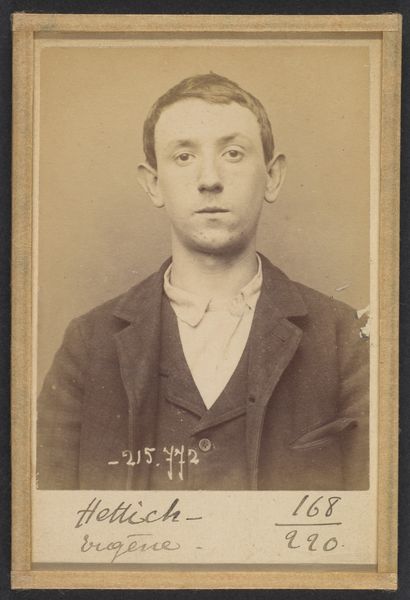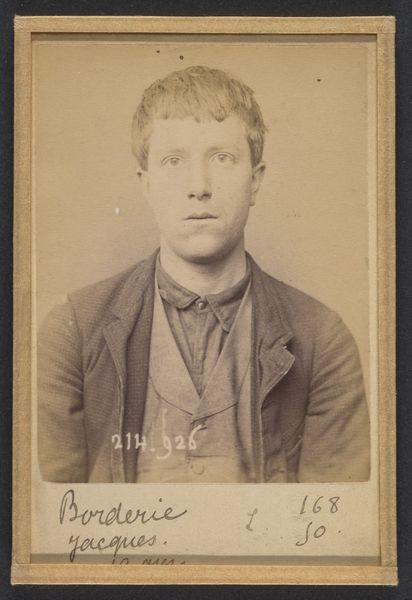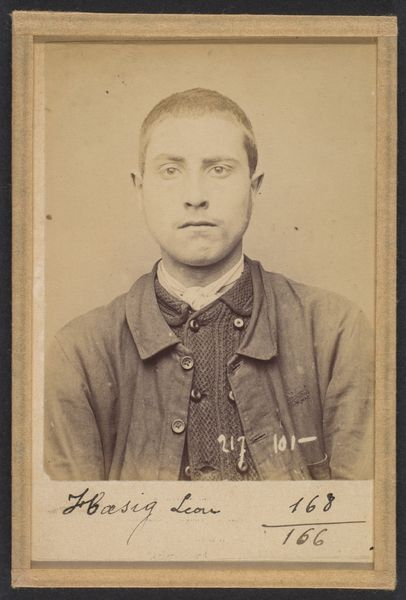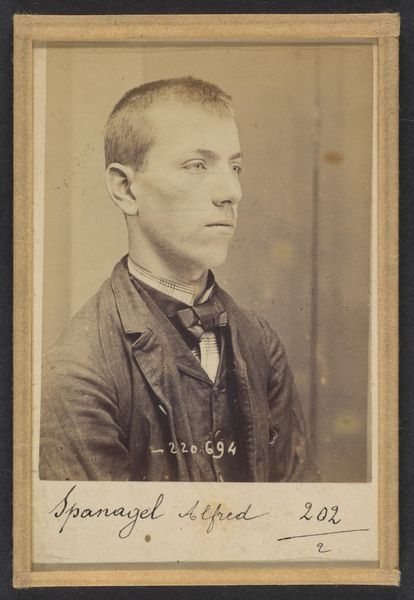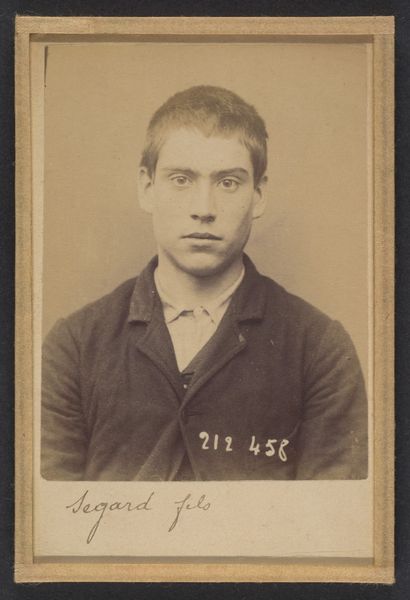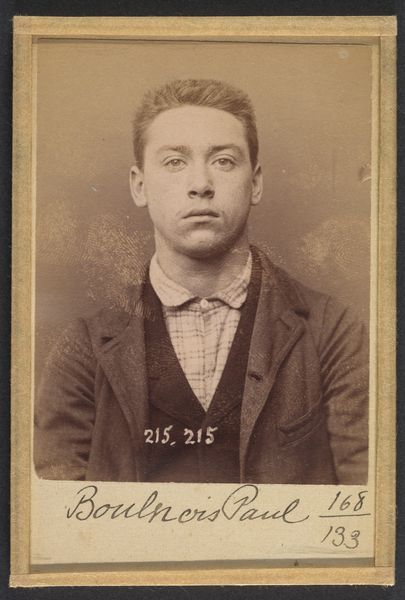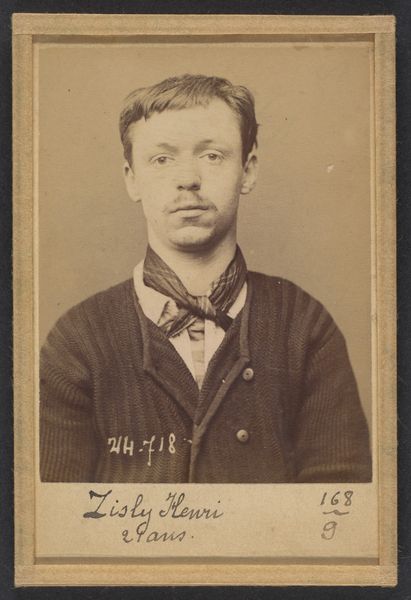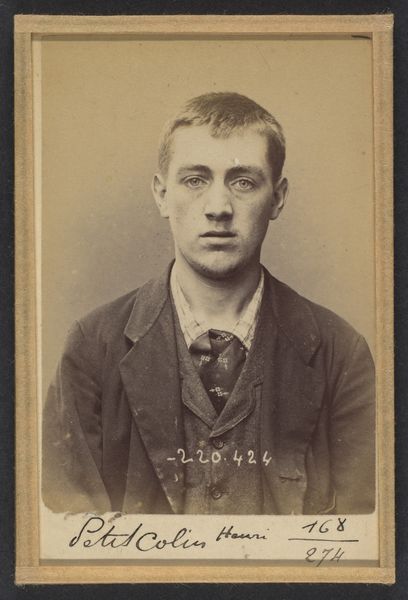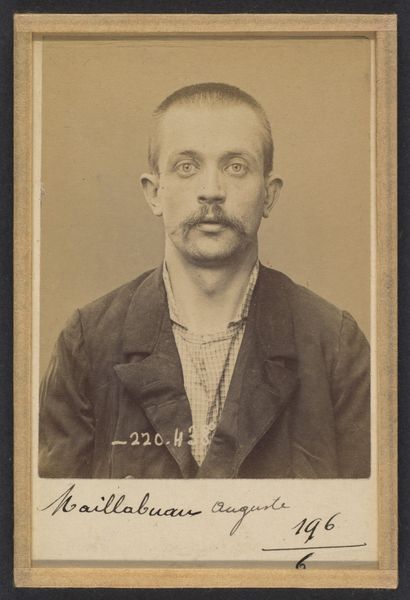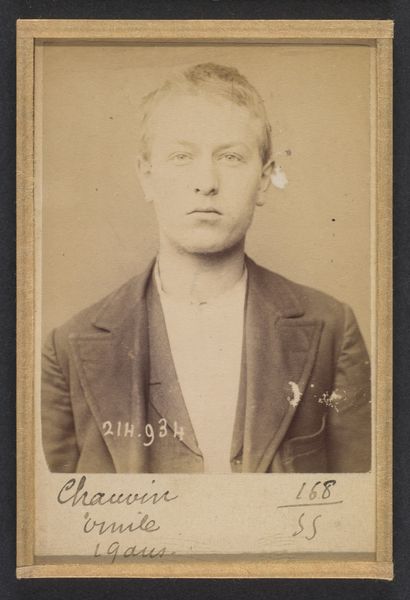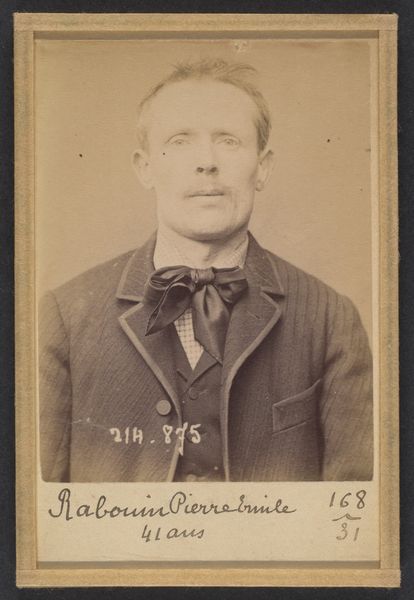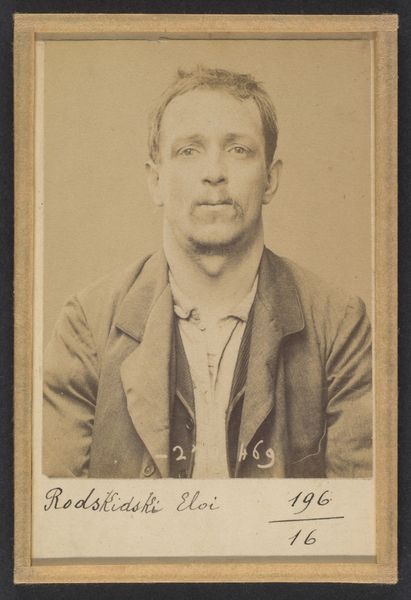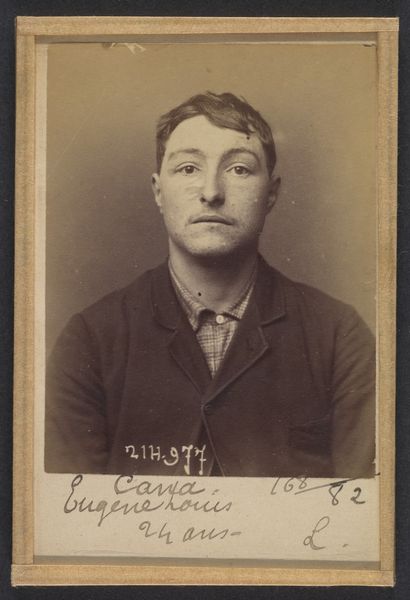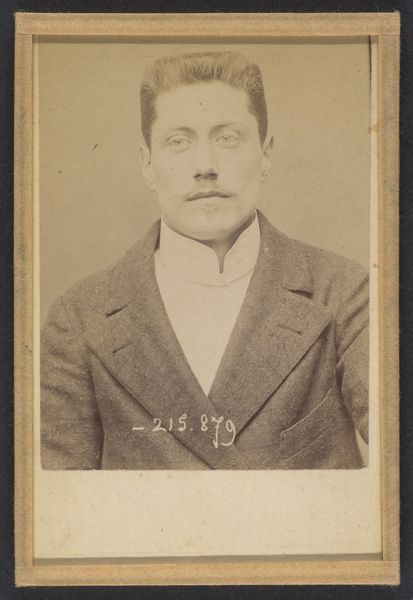
Bocquet. Alexandre, Émile. 17 ans, né à Paris XVlle. Menuisier. Vol. Fiché le 14/4/94. 1894
0:00
0:00
photography, gelatin-silver-print
#
portrait
#
portrait
#
photography
#
gelatin-silver-print
#
academic-art
#
realism
Dimensions: 10.5 x 7 x 0.5 cm (4 1/8 x 2 3/4 x 3/16 in.) each
Copyright: Public Domain
This is a photograph of Alexandre Émile Bocquet, made in 1894 by Alphonse Bertillon. Bertillon was a French criminologist who pioneered the use of anthropometry—the measurement of the human body—for identification purposes. Bocquet, a 17-year-old carpenter, is documented here after being arrested for theft. The photograph is stark; Bocquet's gaze meets ours directly, yet reveals little. The mugshot aesthetic is meant to dehumanize, reducing him to a set of measurable characteristics. Consider the social context: late 19th-century Paris, a city grappling with rapid industrialization and anxieties about crime and class. Bertillon's system, while scientifically flawed, reflects a desire for control and order. It speaks to broader societal anxieties about identity, surveillance, and the pathologization of the working class. This image is a powerful reminder of how systems of power intersect with individual lives, framing and judging them within larger social narratives.
Comments
No comments
Be the first to comment and join the conversation on the ultimate creative platform.
